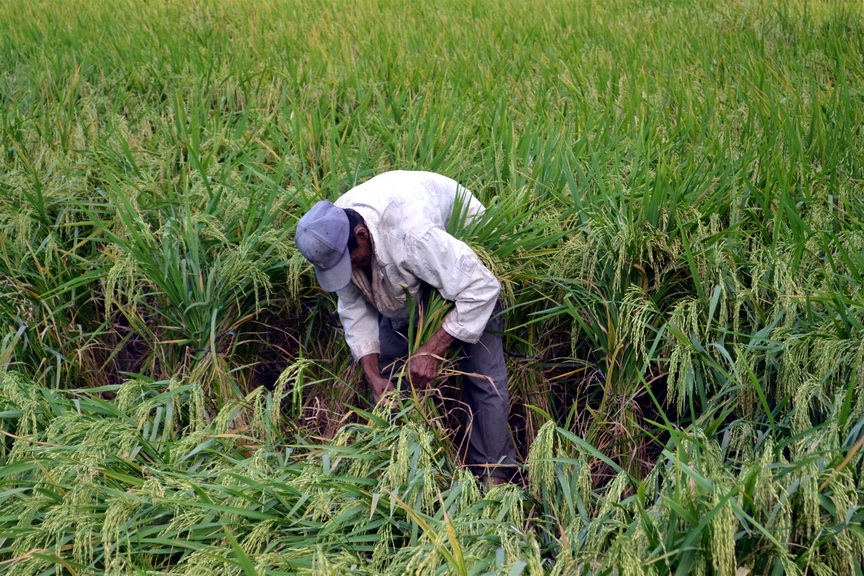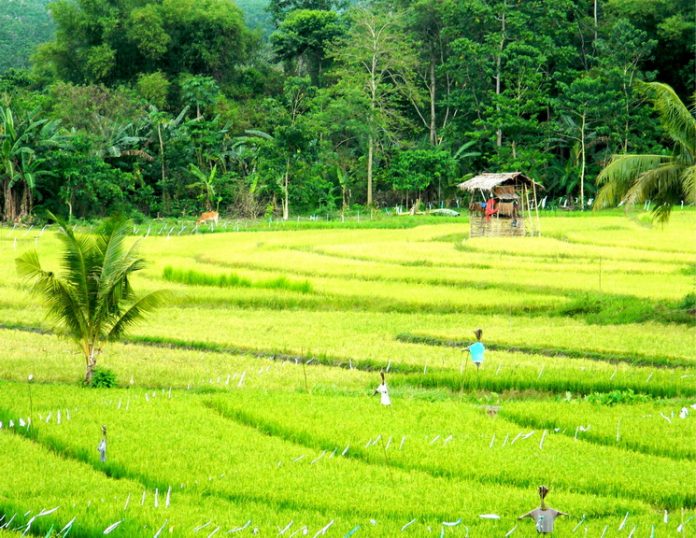“Rice is the one thing that truly defines Asia. From Pakistan to North Korea to Papua New Guinea and Indonesia, rice is the one thing shared by all. Asia has no common political systems, no common religions, no common philosophies and no shared social values — however, each and every day most Asian join in together to eat rice.” Dr. Ronald Cantrell, former director-general of International Rice Research Institute
In business, SRP is the acronym for suggested retail price. But among agricultural research institutions and agri-food businesses, it stands for sustainable rice platform.
“How can we boost production on existing rice lands, protect the environment, mitigate climate change impacts, and safeguard smallholder livelihoods all at the same time?” asked Wyn Ellis, the SRP coordinator of the Laguna-based International Rice Research Institute (IRRI).
SRP seems to be the answer. Actually, it is a global alliance that tries to set a standard for sustainable rice cultivation. The standard uses environmental and socio-economic benchmarks to maintain yields for rice smallholders, reduce the environmental footprint of rice cultivation and meet consumer needs for safety and quality, IRRI explained in a press statement.

SRP was launched in 2015 by IRRI together with UTZ Certified and Aid Environment. In March of 2017, IRRI and the UN Food and Agriculture Organization (FAO) signed a memorandum of agreement supporting the SRP program.
“With over three billion people across the globe eating rice every day, rice is critical to global food security,” said Dr. Maria Helena Semedo, FAO Deputy Director-General, Climate and Natural Resources. “Ensuring sustainable rice production is a key contribution to the global goal of ending hunger.”
Dr. Matthew K. Morell, IRRI Director-General, agrees. “The world faces very significant changes over the next few decades to produce the volume and quality of nutritious food to feed a global population heading for 10 billion people,” he pointed out. “Addressing these issues relies on global partnerships…”
Although rice is basically a complex carbohydrate, its protein contains all eight of the essential amino acids and complements the amino acids found in many other foods. Low in sodium and fat, with no cholesterol or gluten, it is a boon to weight worriers and those allergic to other grains.
Rice is also low in fiber and easily digested. With nutrition high of complex carbohydrates today, rice is at the top, with one-half cup of cooked rice furnishing 82 calories of energy, enough to give people energy to walk for 26 minutes.
In the Philippines, rice is the staple food. In a survey done for the World Bank, it was found that 80% of all respondents consumed rice three or more times a day. Sixteen percent said they ate rice twice a day while only one percent said once. Most of those who ate rice thrice a day belonged to the middle class (81%) and the rich (79%).
From 1980s to 1990s, a Filipino consumed an average of 92 kilograms, recent studies have shown. The consumption went up to 111 kilograms from 2008 to 2009. From 2009 to 2010, it even increased to 119 kilograms.
“If we did not have rice, our deepest comfort food, we would probably feel less Filipino,” the late food epicure Doreen Fernandez once wrote.
But rice is major staple food in other countries, too. In fact, it is the staple for 3.5 billion people, delivering 20% of their daily calorie intake. “Consumption continues to grow in Asia, and though there are signs of decline in some higher income countries, it remains the fastest growing food staple in Africa and Latin America,” noted the website, www.sgs.com.
Indeed, rice production is a big business. “Complex and fragmented, the rice industry produces on average a staggering 480 million metric tons,” the website said. “More than 2 million smallholders work on 160 million hectares of land, but production yields are stalling and environmental concerns are growing.”
 Rice cultivation uses 30-40% of the world freshwater and contributes 5-10% of anthropogenic greenhouse gas emissions, particularly methane.
Rice cultivation uses 30-40% of the world freshwater and contributes 5-10% of anthropogenic greenhouse gas emissions, particularly methane.
According to FAO, rice production is vulnerable to the increasing impacts of climate change, including extreme weather events such as droughts and floods.
Dr. Abdelbagi Ismail, IRRI principal scientist, said these problems have become more severe. “We estimate more than probably25 million hectares are lost to drought every year, and probably 20 million hectares lost to floods all over Asia,” he said.
Thus, SRP came into existence. It targets one million farmers across the world to adopt climate-smart sustainable best practices by 2012. The standard and indicators are intended both as a basis for certification of value-added rice products and also as a benchmark for policymakers.
“SRP is not about adding a certification mark to the end-product,” explained Geert Eenhoorn, rice project manager of UTZ. “It is about making a difference to farming, farmers and the environment around the globe.”
Addressing the challenges faced by the full range of businesses, the SRP has developed a set of performance indicators that can be scaled to suit. “In a departure from the traditional pass/fail standard, the inclusion of these indicators helps to drive a culture of continuous improvement,” Eenhoorn said.
The performance indicators include profitability, productivity, labor, yield, water use, food safety, nutrient use efficiency, greenhouse gas emissions, health and safety, child labor and women’s empowerment.
“From smallholders to larger rice producers, across the globe, there is increasing awareness of food quality and safety issues, and a desire to reduce the impact of their activities on the environment,” Eenhoorn stressed.
In the Philippines, SRP was pilot-tested in Iloilo. Jaime Gallentes, the senior coordinator of the project, wrote in “Rice Today,” the result of the study: “On average, the farmers scored 64 to 76 sustainability points out of the 90% required for them to earn sustainability status. They had the lowest scores in food safety and labor rights. The results indicate that the farmers could work toward sustainable rice cultivation if given the appropriate support such as tailored programs that build on what they are currently have to narrow these gaps.”
But the good thing is that farmers are already seeing the benefits of the SRP. “The SRP enlightens us on the value of record keeping,” one farmer was quoted as saying. Among those part of the standard were keeping track of various management details (examples: rice varieties used, yield, amount of fertilizer and pesticide, costs, profitability). “It also widens our understanding of the importance of protecting the environment through the efficient use of water and organic fertilizer.”







